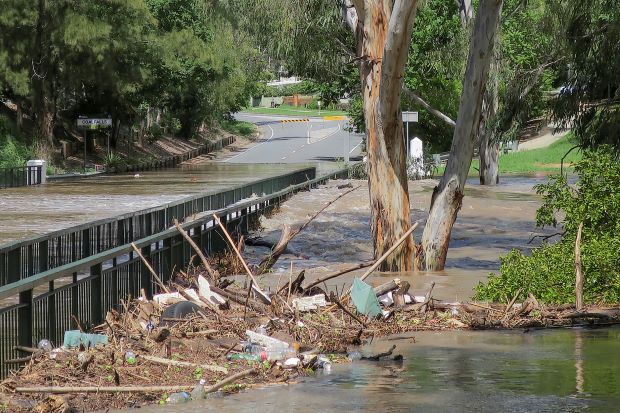Climate change poses a significant risk to infrastructure, as extreme weather events such as heatwaves, droughts, bushfires, storm surges and flooding become more frequent.

The damaging effects of extreme weather events are evident now. In 2017, Hurricane Harvey ravaged the United States, causing $125 billion worth of damage. In 2019, fires raged out of control in the Amazon. The Australian 2019/20 bushfire season began in winter and went on to burn an estimated 18.6 million hectares and claim 34 lives. While the economic cost of the fires is still being calculated, it is expected to exceed the $4.4 billion price tag some have attached to the 2009 Black Saturday fires.
The effects of the changing climate have significant implications for asset management. Extreme weather events, whether they be flood, fire or storm, can have significant impacts on infrastructure and their provision of service, which results in physical, service and financial risk, believes David Jenkins CEO IPWEA.
Climate resilience is a system’s capacity to maintain function while absorbing stresses caused by climate change, and to adapt, reorganise and evolve to improve the sustainability of the system, leaving it better prepared for future climate-related impacts.
We need to build resilience into infrastructure in the planning phase. As the saying goes, prevention is better than cure. As a rule of thumb, early mitigation measures can save five times the cost of repairs.
Changes in climate will have an inevitable impact on the long-term performance of infrastructure , which in turn affects the entire asset management planning process. The key is to make the asset planning process stronger to improve resilience and readiness to prepare for climate-related and other unforeseen events.
The authors of an article published at McKinsey, ‘Climate resilience: Asset owners need to get involved now’, argue that “asset owners must start by answering fundamental questions about the particular risks of their unique geography, calculate costs of asset loss or damage as well as business disruption, decide how to protect critical components, and prioritize strategies with the greatest return on investment.”
Any adaptation strategies, they argue, should take a layered approach that includes a range of solutions to allow for agility in the face of an adverse climate event.
The failure to factor climate change’s effects on infrastructure during the planning and construction phases can be costly. For example, five years before Tropical Cyclone Fehi hit Rabbit Island, near Nelson in New Zealand, the area was identified at being at moderate risk of coastal damage. The warning was not heeded; no action was taken and when the storm hit in 2018, the resulting damage was so severe the road had to be replaced.
A realignment of traditional asset management philosophy is required to rise to the challenge posed by climate change. Asset owners must explicitly recognise climate change risks and examine the vulnerability of their network. When disasters occur, rebuild to a higher standard in the expectation that risks will only increase in the future. IPWEA runs training to build capacity in this type of asset management planning, which is also a component of the International Infrastructure Management Manual (IIMM).
The uncertainties around climate change create an opportunity for engineers to do things differently: to innovate and look at new technical solutions. Building resilience now will help us face the ‘unknown unknowns’ that will inevitably threaten our systems in the future.